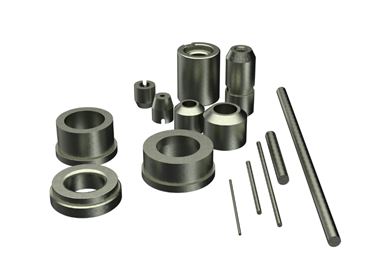H.B. Carbide Grade Performs in Highly Abrasive Operations
The HB-3 grade is a submicron carbide well suited for wear parts and cutting tools being used in non-ferrous machining applications.
H.B. Carbide’s HB-3 grade is a submicron carbide specially designed for use in cutting tools for highly abrasive machining applications and wear components.
With a 6% cobalt binder and 93 HRA hardness, grade HB-3 is well suited for wear parts and cutting tools being used in non-ferrous machining applications. According to the company, it offers a homogenous microstructure and uniform grain distribution that makes this grade a well-suited choice for cutting tools used for machining in ISO K20 applications; specifically aluminum alloys, graphite, fiber-reinforced materials and composites. It can be applied for use in drills and reamers, form tools, end mills and other solid-carbide cutters.
The high hardness and high wear resistance of HB-3 can also perform in wear parts such as drawing tools and industrial-grade nozzles.
With a 6% cobalt content, HB-3 is said to provide consistent coating adhesion, making it a specialized substrate for toolmakers who will be applying diamond coating to their tools, especially those used for composite routing and drilling.
Jon Wyniemko, director of global sales at H.B. Carbide, says, “In addition to HB-3 carbide being an outstanding substrate selection across a variety of high-wear-resistant material applications, the consistency of the H.B. Carbide manufacturing process ensures reliable performance and prompt lead times across a variety of blank configurations.”
Related Content
-
Threading On A Lathe
The right choices in tooling and technique can optimize the thread turning process.
-
A New Milling 101: Milling Forces and Formulas
The forces involved in the milling process can be quantified, thus allowing mathematical tools to predict and control these forces. Formulas for calculating these forces accurately make it possible to optimize the quality of milling operations.
-
How to Mitigate Chatter to Boost Machining Rates
There are usually better solutions to chatter than just reducing the feed rate. Through vibration analysis, the chatter problem can be solved, enabling much higher metal removal rates, better quality and longer tool life.











.png;maxWidth=300;quality=90)





